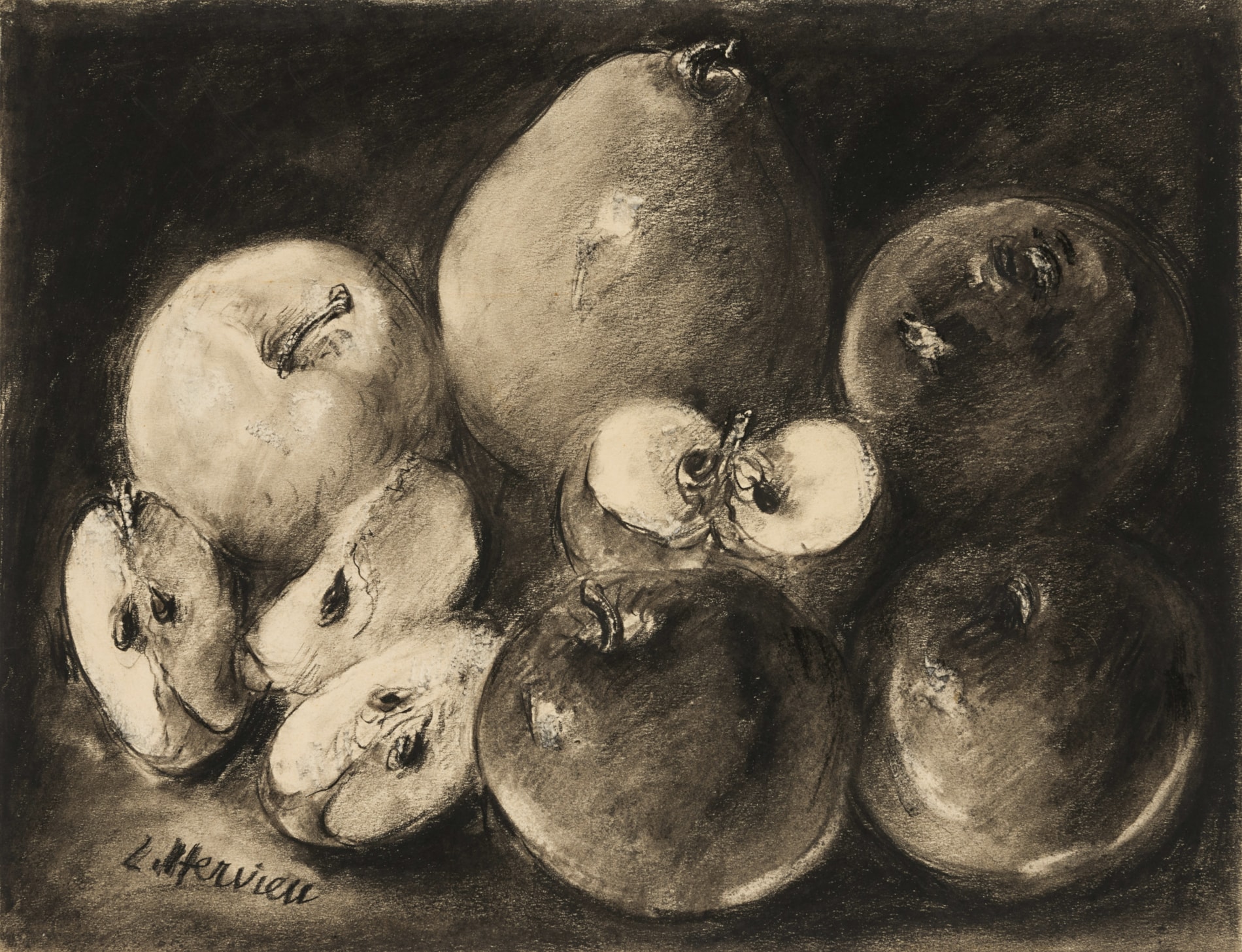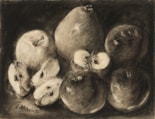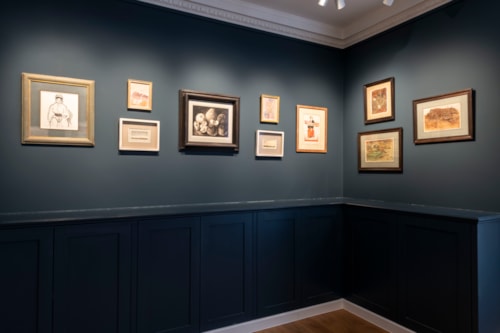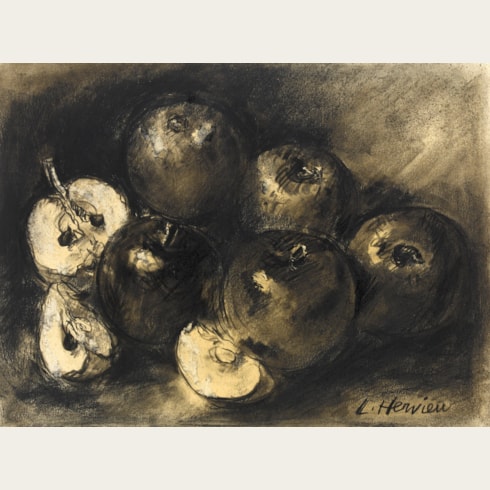Louise HERVIEU
(Alençon 1878 - Versailles 1954)
Still Life with Apples and a Pear
Sold
Charcoal and stumped black chalk.
Signed L. Hervieu in charcoal at the lower left.
252 x 325 mm. (9 7/8 x 12 3/4 in.)
Signed L. Hervieu in charcoal at the lower left.
252 x 325 mm. (9 7/8 x 12 3/4 in.)
The 20th century art historian and critic Claude Roger-Marx, a close friend and admirer of the artist, published his Éloge de Louise Hervieu in 1953, a year before her death. In it he described her monochromatic drawings, which he likened to those of Odilon Redon and Georges Seurat: ‘Dark curtains open and we enter a world where Love and Death speak in hushed tones.’ The following year, in his book Maîtres du XIXe siècle et du XXe, he added that, ‘Drawing, for Louise Hervieu, is really about taking possession of the world by giving the word its complete physicality.’ Roger-Marx also wrote the preface to a posthumous exhibition of Hervieu’s drawings and paintings at the Galerie Marie L. André in Paris in 1969.
In 1978 Roger-Marx bequeathed a very large drawing by Hervieu of seashells and a pearl necklace to the Louvre, which owns two further drawings by the artist. Other drawings by Louise Hervieu are in the collections of the Musée National d’Art Moderne in Paris and the museums of Bordeaux, Caen and Nantes.
In 1978 Roger-Marx bequeathed a very large drawing by Hervieu of seashells and a pearl necklace to the Louvre, which owns two further drawings by the artist. Other drawings by Louise Hervieu are in the collections of the Musée National d’Art Moderne in Paris and the museums of Bordeaux, Caen and Nantes.
An extraordinary figure in the artistic and literary circles of Paris in the first half of the 20th century, Louise-Jeanne-Aimée Hervieu took up painting around 1905, having studied with Lucien Simon, André Dauchez and René Ménard. She participated in the Salon des Indépendants in Paris, and in 1910 had a one-woman exhibition at the Galerie Eugène Blot in Paris. After this, however, she abandoned painting at the insistence of her parents, although she continued to make charcoal drawings and pastels - often of female nudes, still lives and interior scenes - as well as lithographs. She soon came to the attention of the critic Félix Fénéon, who in 1917 organized the first of several exhibitions of her drawings at the Galerie Bernheim-Jeune. Fond of intense chiaroscuro techniques, Hervieu achieved remarkable effects of mood and mystery in her drawings, often rubbing and scratching, with a razor blade, the surface of her drawings to heighten their visual impact. She became friendly with such artists as Félix Vallotton, Pierre Bonnard and Edouard Vuillard, and also provided illustrations for several books, including Charles Baudelaire’s Les fleurs du mal in 1920 and Le spleen de Paris in 1922.
Born with congenital syphilis and always in very poor health, Hervieu was, by her forties, confined to her room and had largely withdrawn from the world. As a result of chronic meningitis, her eyesight gradually deteriorated, and by the early 1920s she had abandoned working in colour. By 1927 she had grown almost completely blind and had stopped drawing altogether; the catalogue of her retrospective exhibition at Bernheim-Jeune that year was prefaced by a statement intended by the artist as a sort of artistic ‘farewell’. She had by then turned to writing, and in 1925 her book L’âme du cirque was published, accompanied by illustrations by Bonnard, Maurice Denis, Picasso, Georges Rouault and André Lhote. In 1936 Hervieu’s novel Sangs won the Prix Fémina; this was followed by Le crime, published in 1937, Le malade vous parle in 1943 and La rose de sang in 1953.
Born with congenital syphilis and always in very poor health, Hervieu was, by her forties, confined to her room and had largely withdrawn from the world. As a result of chronic meningitis, her eyesight gradually deteriorated, and by the early 1920s she had abandoned working in colour. By 1927 she had grown almost completely blind and had stopped drawing altogether; the catalogue of her retrospective exhibition at Bernheim-Jeune that year was prefaced by a statement intended by the artist as a sort of artistic ‘farewell’. She had by then turned to writing, and in 1925 her book L’âme du cirque was published, accompanied by illustrations by Bonnard, Maurice Denis, Picasso, Georges Rouault and André Lhote. In 1936 Hervieu’s novel Sangs won the Prix Fémina; this was followed by Le crime, published in 1937, Le malade vous parle in 1943 and La rose de sang in 1953.
Provenance
Jean-Claude Barrie, the Barrie-Chevalier collection, Saint-Amans-des-Cots (with the collection stamp, not in Lugt, on the old backing board).







